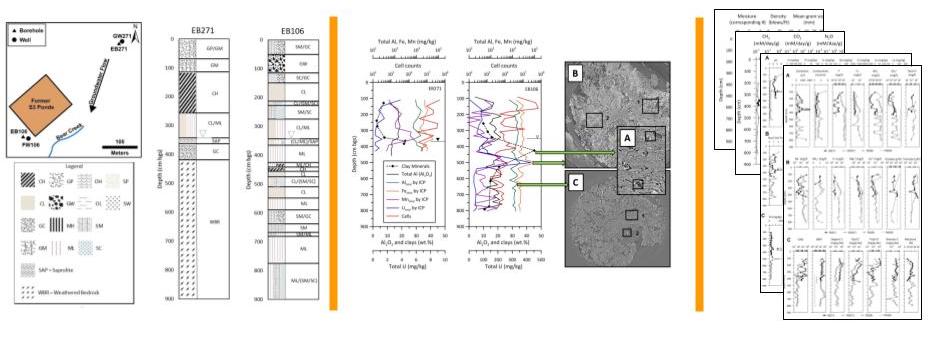
Characterization of subsurface media from locations up- and down-gradient of a uranium-contaminated aquifer
Moon, J.-W., Paradis, C.J., Joyner, D.C., von Netzer, F., Majumder, E.L.,Dixon, E.R., Podar, M., Ge, X., Walian, P.J., Smith, H.J., Wu, X., Zane, G.M., Walker, K.F., Thorgersen,M.P., Poole II, , F.L., Lui, L.M., Adams, B.G., De León, K.B., Brewer, S.S., Williams, D.E., Lowe, K.A.,Rodriguez Jr., , M., Mehlhorn, T.L., Pfiffner, S.M., Chakraborty, R., Arkin, A.P., Wall, J.D., Fields, M.W.,Adams, M.W.W., Stahl, D.A., Elias, D.A., Hazen, T.C.
Chemosphere, https://doi.org/10.1016/j.chemosphere.2020.126951
- Previous work examining groundwater and sediment attached communities indicated that sediment communities were more taxonomically and functionally stable than groundwater and were, in total, responsible for more activity.
- In a contamination plume, water flow, oxygen and differential contaminant flow and mineral content are expected to constrain the functional identity and activity of these communities.
- This deep of contrasting sediment provides a nearly unprecedented view into the sediment environment that bounds microbial dispersal, growth and activity
- This study sets the stage for a detailed analyses of the distribution of these biological factors under spatially-distributed, differential flow conditions

